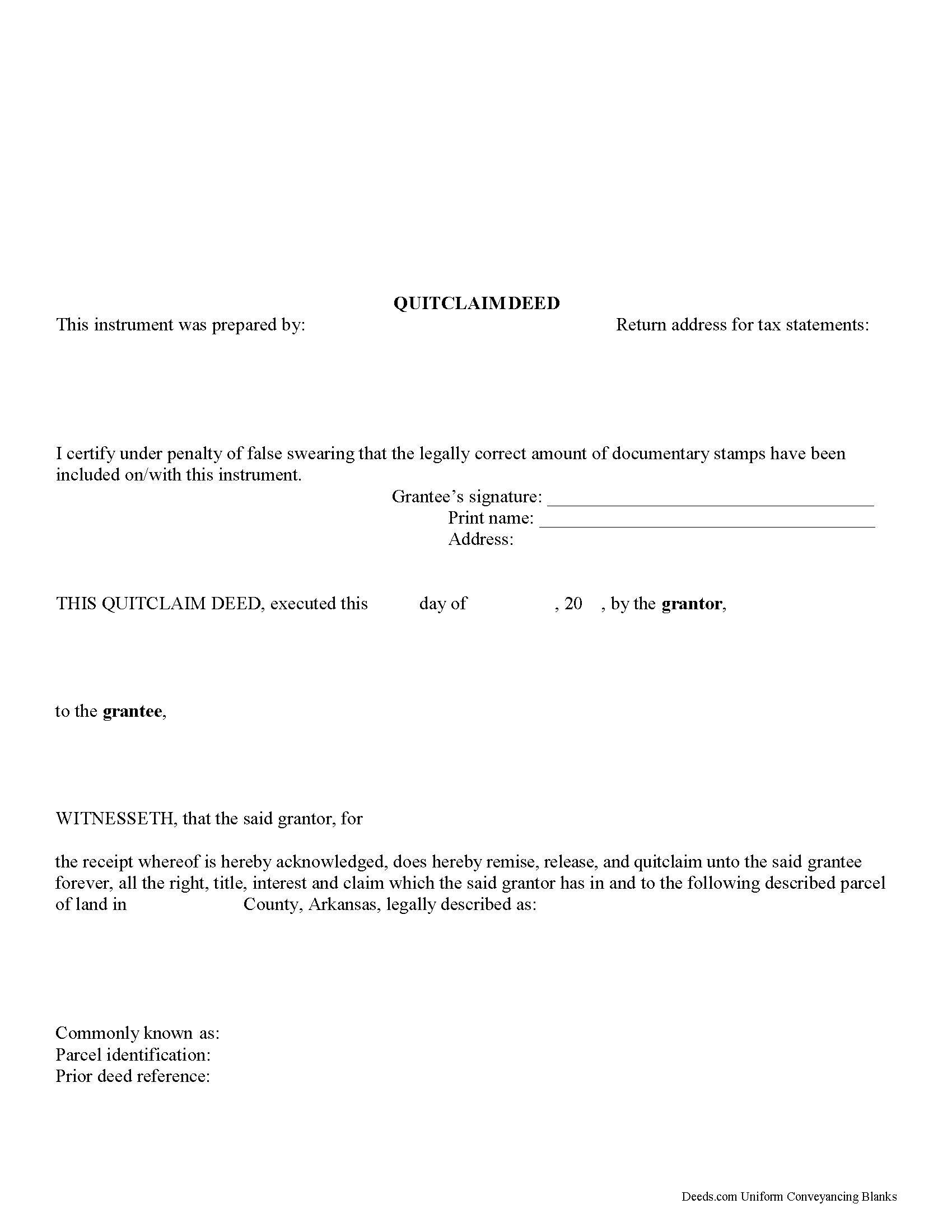Arkansas Quitclaim Deed Forms

Arkansas Quitclaim Deed Overview

How to Use This Form
- Select your county from the list on the left
- Download the county-specific form
- Fill in the required information
- Have the document notarized if required
- Record with your county recorder's office
A validly executed Arkansas quitclaim deed must meet specific statutory obligations.
Content:
The Arkansas statutes explain that any document conveying rights to real property must be in writing; contain a heading or title describing the purpose and intent of the instrument (in this case Quitclaim Deed) and; provide the name, marital status, address and signature of grantor. While the grantor's marital status is not expressly required, A.C.A. 18-12-403 (2012) states that no instrument conveying the homestead of any married person is valid unless his or her spouse joins in the execution of the instrument, or conveys by separate document, and acknowledges it. If the property conveyed is NOT classified as a homestead, only the grantor must sign unless the spouse is on the original deed as a co-owner.
Avoid using the terms "grant, bargain, and sell," because they contain an express covenant of warranty to the grantee. Including a warranty changes the nature of the deed from a simple quit claim. See A.C.A. 18-12-102 (2012).
The quit claim deed must also contain the name, address, and vesting decision (how title will be held) of the grantee and a description and address of the land being transferred.
As per A.C.A. 18-12-104 (2012), all documents conveying real estate must be executed before two disinterested witnesses, one of whom may be the notary or other official acknowledging the grantor's signature.
Recording:
A.C.A. 14-15-402 (2012) itemizes the formatting requirements for Arkansas quit claim deeds. Use only letter-sized paper (8" x 11") allowing a 2" margin at the top right of the first page, " margin on the right, left and bottom, and all around on other pages except for the last, which should have a 2" margin at the bottom. If the document does not follow these guidelines, it may not be accepted for recording or it might incur non-standard document fees.
A.C.A. 14-15-404 (2012) discusses the effect of recording instruments changing property ownership. The act of recording a deed enters it into the public record. This preserves the continuous chain of title, allowing future prospective owners to review the property's ownership history. Therefore, if a bona fide purchaser (one who buys something for value without notice of title defects) records a deed for property that has been previously conveyed to someone who never recorded the deed, the later purchaser retains ownership because there was no public notice of the earlier transfer. In short, record the quit claim deed as soon as possible after it's executed.
Be aware that counties often require unique formatting, additional information, tax forms, or other documents before the quit claim deed may qualify for recording.
(Arkansas Quitclaim Deed Package includes form, guidelines, and completed example)
Important: County-Specific Forms
Our quitclaim deed forms are specifically formatted for each county in Arkansas.
After selecting your county, you'll receive forms that meet all local recording requirements, ensuring your documents will be accepted without delays or rejection fees.
How to Use This Form
- Select your county from the list above
- Download the county-specific form
- Fill in the required information
- Have the document notarized if required
- Record with your county recorder's office
Common Uses for Quitclaim Deed
- Transfer property between family members
- Add or remove names from property titles
- Transfer property into or out of trusts
- Correct errors in previously recorded deeds
- Gift property to others